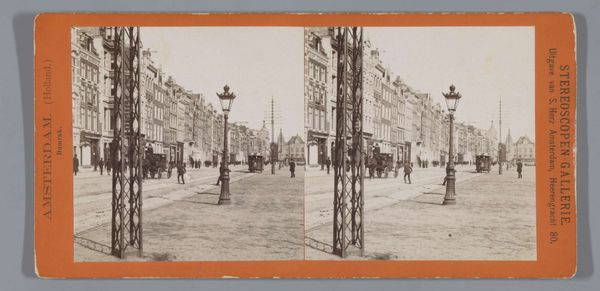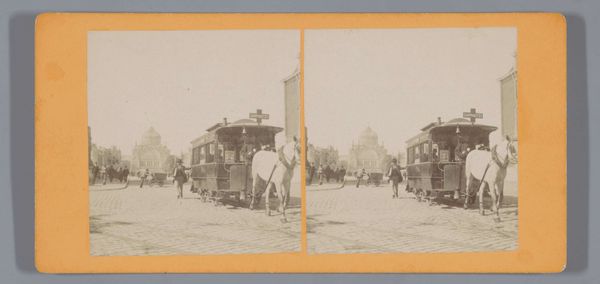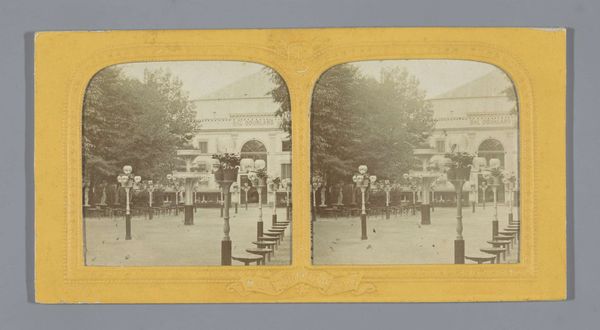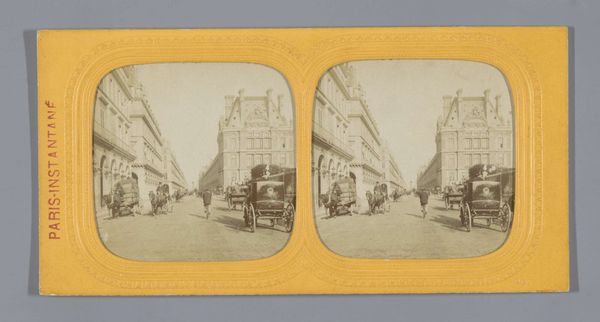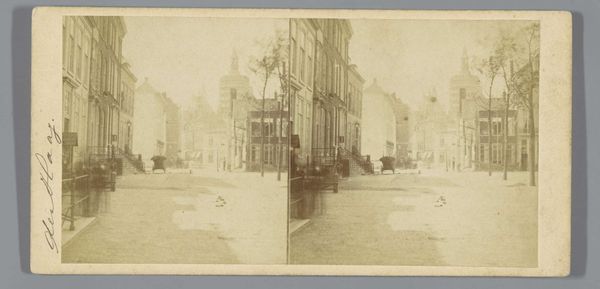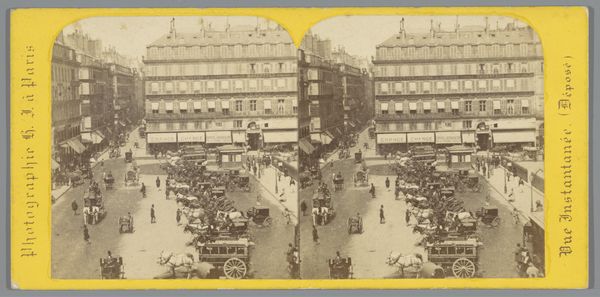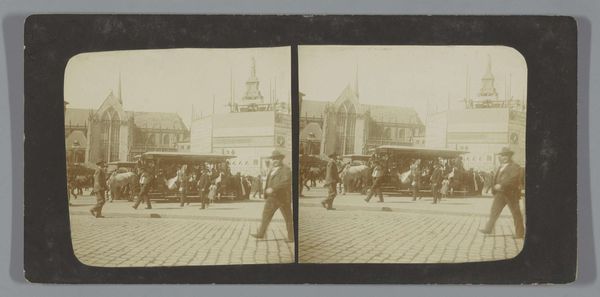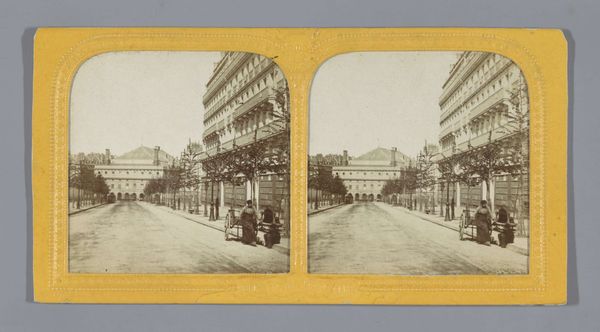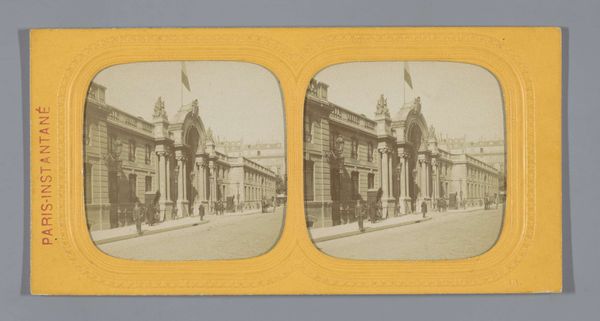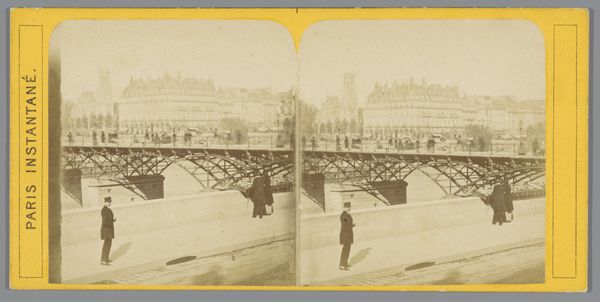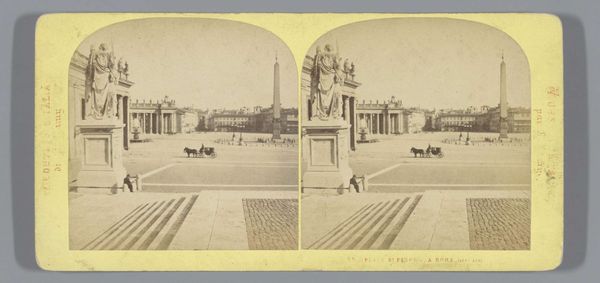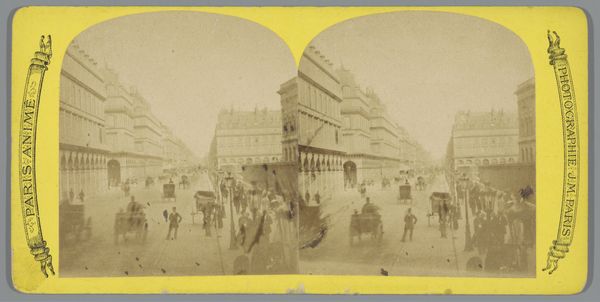
photography, gelatin-silver-print
#
16_19th-century
#
street-photography
#
photography
#
coloured pencil
#
gelatin-silver-print
#
cityscape
#
realism
Dimensions: height 85 mm, width 176 mm
Copyright: Rijks Museum: Open Domain
Curator: Here we have an intriguing gelatin-silver print entitled "Hogesluis en het Paleis voor Volksvlijt, Amsterdam." The image likely dates between 1883 and 1910. Editor: It has a remarkably subdued, almost dreamlike quality. The soft grays and browns lend a wistful feeling. Curator: Absolutely. Understanding the period is essential. Consider the rise of industrialization in Amsterdam, along with shifting class dynamics that would shape street photography like this. This image, documenting everyday urban life, inadvertently captures this era's spirit and socio-economic conditions. Editor: My eye is immediately drawn to the distant domed building—the Palace of People's Diligence. What a wonderfully grand and aspirational symbol it must have been for the city at that time! Curator: The Palace symbolized Dutch ambition, mirroring the bourgeois aspirations while simultaneously juxtaposing with the unseen labor that upheld such societal structures. Did marginalized communities feel included in this notion of ‘diligence’ is worth considering. Editor: I wonder how that building influenced Amsterdam's identity. Domed structures often echo power or progress, right? It makes you think about societal aspirations. The composition steers your eye through layers. It begins with cobblestone and figures and finishes with architecture far away in the backdrop. Curator: Right. The photographer’s use of realism served to legitimize and perhaps naturalize existing power dynamics. Also, examining street photography through gender and class frameworks helps dissect representational practices embedded within it. What were women doing here? Are there disparities in clothing, or activities? Editor: I find how timeless the overall impression remains. Even today, in the digital age, a bustling public space pulses with this familiar vitality, and yet also retains hints from past histories. The visual vocabulary continues. Curator: I agree. Studying how these streets served as grounds of negotiating different identities through art helps us reflect on the progress—or lack thereof—in present societal equality projects. Editor: This brief visual journey really did make me see this scene in a refreshed way. Curator: For me as well, diving deeper allows an understanding of photographic traditions through an equity lens.
Comments
No comments
Be the first to comment and join the conversation on the ultimate creative platform.
